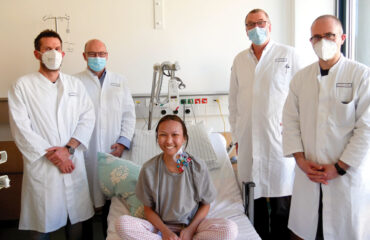
In his AI Genealogy Insights post, Why the Coalition’s New Statement on AI and Historical Images Matters, Steve Little describes the result of an AI’s reconstruction of the photo of his grandfather, Warren Dean Lawrence, as “troubling.”
By James Myers
Genealogists create the historical record of the ancestry of a person, family, or group that is often incomplete from the loss of physical documents and photos over generations as people and families move around the globe. Although artificial intelligence is proving extremely beneficial in piecing together fragments of historical records, the Coalition for Responsible AI in Genealogy warns of the potential for AI image generators to distort the historical record.
The National Genealogical Society has joined in the warning. The Society’s AI Program Director, Steve Little, has joined in the Coalition’s warning for caution in the use of powerful new image-generation tools on historical images. Recently released applications like Google’s Gemini 2.5 Flash Image (also known by its pre-release codename “Nano Banana”) and OpenAI’s GPT-4o can generate clear images from faded, worn, stained, and damaged photos, but at the same time they can make material changes to the image contents.
Repeated tests of image generators on family photos taken years earlier demonstrate the shortcomings of the technology when it’s prompted to restore a photo. Facial features are changed, as are clothing and items in the background. The changes might appear subtle at first glance, but the effect is a lasting alteration of the historical record and loss of information that can be significant.
Consider, for example, alterations in the following image comparisons.

A comparison of edits on a closeup of Margaret Thompson. Left: Unedited crop from the original photo taken around 1885. Middle: Edited in Photoshop, about 2020, for black and white conversion, contrast, and spot removal. Right: Modified in Gemini 2.5 Image Flash 3 September 2025 for black and white conversion, contrast, and spot removal, which also altered Margaret’s facial features and the neckline of her dress and omitted the brooch. Images: Mark Thompson, Coalition for Responsible AI in Genealogy.
The AI-generated face of Margaret Thompson has changed her mouth and nose and distorted her ear. The brooch that’s displayed in the original photo has been lost, a deletion that could have historical significance if the brooch signalled an important time that it was purchased, received as a gift, or inherited and if it held a particular meaning for Margaret at the time the original photo was taken.
In its November 4 statement, Protecting Trust in Historical Images, the Coalition for Responsible AI in Genealogy recommends the application of three guidelines for historical images altered by AI.
The first of the recommendations is that an image modified by AI should be labelled clearly and visibly as an AI-modified image. The second recommendation is to cite the original source of the image together with details of the modifications. Finally, modified images should be used for illustrative purposes, not as evidence of time, place, and identity.
There remain many benefits for the use of AI for genealogy.
While AI modifications of photos can pose a threat to the historical record, AI has also brought many benefits to professional and amateur genealogists.
Family Search, an international non-profit organization “dedicated to helping all people discover their family story,” lists the value that AI adds to genealogical searches. Included in the benefits are AI’s ability to transcribe old and difficult to read records, combining multiple databases and sources, and translation of records in foreign languages.
Understanding the limitations of a technology like an AI image generator is important for maintaining an accurate historical record. An AI like Nano Banana operates by prediction, and therefore when it replaces a blurred, scratched, stained, or missing section of an image, it’s doing so on the basis of patterns it has been trained on from countless other images that aren’t necessarily in the same historical context. For example, the AI might generate a church that has faded in the background of an image using guesses based on thousands of church images in its database, but it may not apply the correct style to the church as churches existed in the location and time that the photo was taken.
Technological limitations like these make it important to preserve a high-quality digital copy of the original image and to ensure that prompts to the AI are detailed and preserved. The Coalition advises that accuracy should be valued over artistry in AI-generated historical images.
Even when following the Coalition’s three guidelines for AI-generated images, it’s still important to spend time reviewing all details of the output for potential distortions and to prompt the AI to regenerate the image to fix errors like the deletion of the brooch in the image of Margaret Thompson above.
The future deserves to understand how it came to be.
The historical record of a person, family, or group often has significant consequences for the actions of their future successors. If we want to follow the example of a famous or not-so-famous person in history, we should be careful that we understand what their example and motivations were. That’s a key importance of genealogy, and why getting the combination of AI and history right is worth a detailed look at the output of an AI’s algorithms.
Craving more information? Check out these recommended TQR articles:
- Thinking in the Age of Machines: Global IQ Decline and the Rise of AI-Assisted Thinking
- Everything Has a Beginning and End, Right? Physicist Says No, With Profound Consequences for Measuring Quantum Interactions
- Cleaning the Mirror: Increasing Concerns Over Data Quality, Distortion, and Decision-Making
- Not a Straight Line: What Ancient DNA Is Teaching Us About Migration, Contact, and Being Human
- Digital Sovereignty: Cutting Dependence on Dominant Tech Companies




